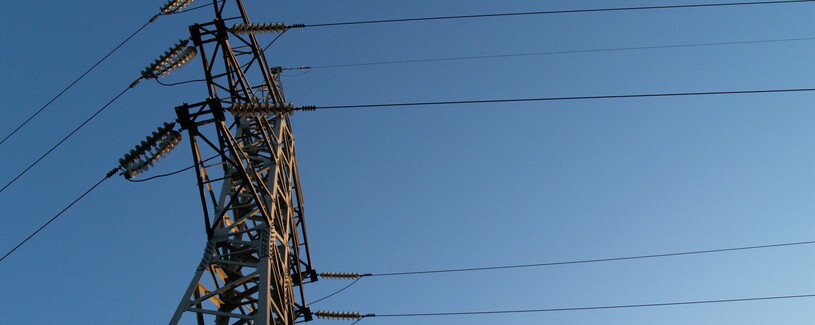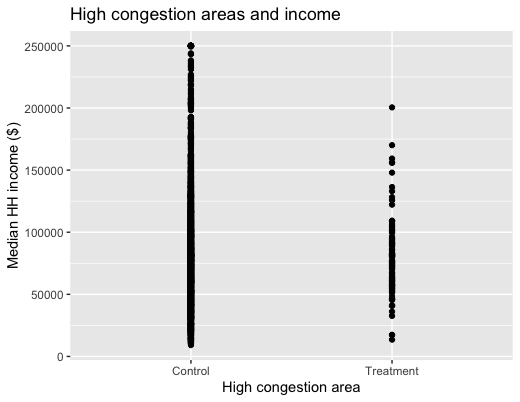Are Congested Feeders Correlated with Household Income?

The SEEDS II team examined the correlation between grid congestion and household income. We analyzed the data at the census block group level for 7 Avangrid feeders and 8 Eversource feeders. Census block groups are small geographical units typically including a few hundred people. These feeders are control and treatment feeders from our value-of-solar (VOS) study. The results indicate that there is a weak statistical correlation between living in low and medium-income (LMI) neighborhoods and living in grid congested areas.
We overlaid maps of all 15 feeders on census block group maps to identify the block groups serviced by each feeder. These 15 grid congested area feeders cover 94 unique block groups (treatment block groups). 2,493 other block groups in Connecticut are considered as our control block groups.
We then matched these block groups with the 2018 Block-Group Level Planning Database.1 This database is produced by the U.S. Census Bureau and includes a range of housing, demographic, socioeconomic, and census operational data. The database pulls variables from the Census American Community Survey (ACS) databases. We used median household income at the block group level and used 100% Area Median Income (AMI), or the middle income of all the incomes in the area as defined by the U.S. Department of Housing and Urban Development, as the threshold to classify those block groups as LMI neighborhoods. Here is the distribution of control/treatment block groups and high-income/LMI block groups:
Then, we conducted a correlation analysis to measure the strength of association between block group-level median household income (a continuous variable) and the treatment/control status of the block group (a categorical variable). We find a Pearson correlation coefficient of -0.0097 for our entire sample.2 Below is an illustration (scatter plot) of the correlation.
Control = all the other block groups in CT
The result indicates that being a grid-congested block group is very weakly negatively associated with median household income. The fact that the correlation coefficient is very close to zero suggests that grid-congested areas, in general, are not necessarily either low-income or high-income areas, but are pretty close to as-good-as randomly drawn from all areas in Connecticut. This is an interesting finding when thinking about targeting solar adoptions to areas of high grid congestion, and additional research could help to parse it further.
1This block group level Planning Database includes 2010 Census and 2012–2016 American Community Survey Data
2Chi-square test indicates that LMI status and Treatment/Control feeder type are independent

